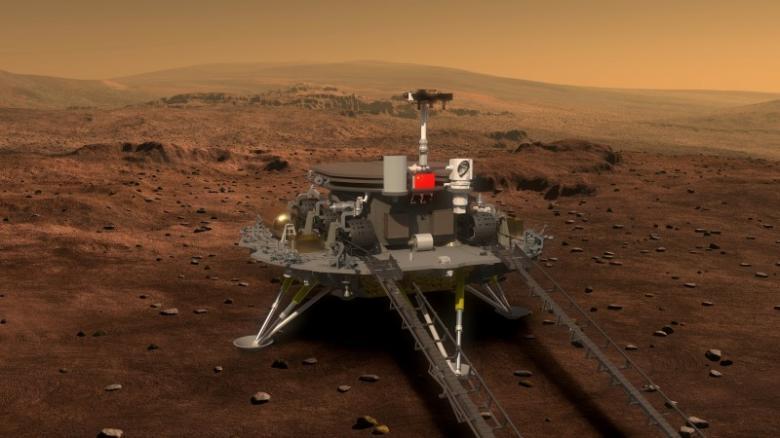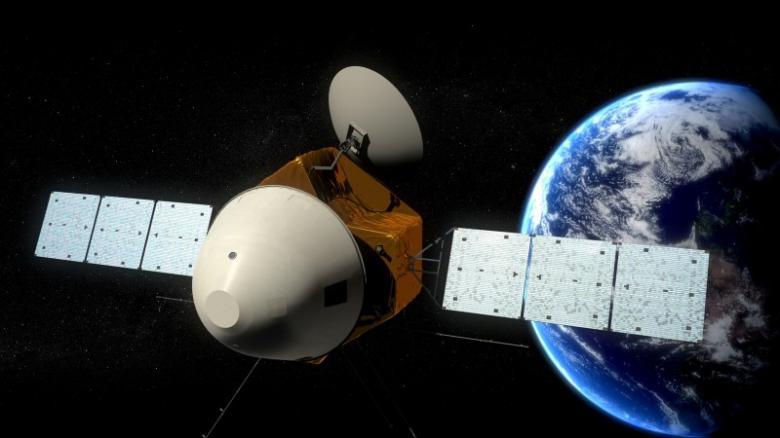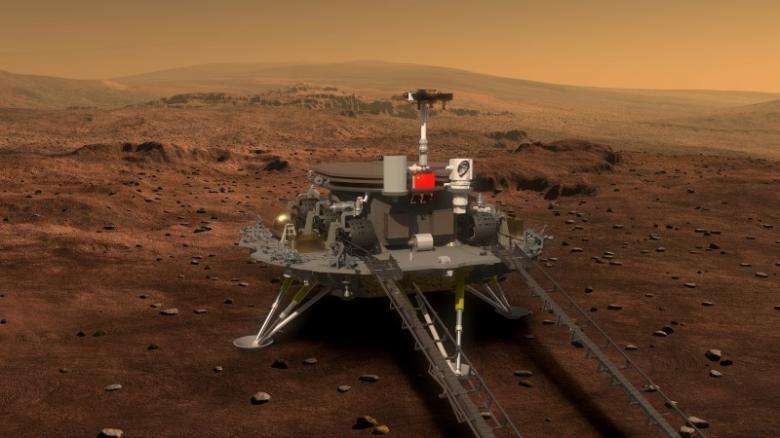China unveils first photos of Mars rover that it plans to send to Red Planet in 2020
China claims that the space programme is for peaceful purposes – but the US doesn't entirely agree

Your support helps us to tell the story
From reproductive rights to climate change to Big Tech, The Independent is on the ground when the story is developing. Whether it's investigating the financials of Elon Musk's pro-Trump PAC or producing our latest documentary, 'The A Word', which shines a light on the American women fighting for reproductive rights, we know how important it is to parse out the facts from the messaging.
At such a critical moment in US history, we need reporters on the ground. Your donation allows us to keep sending journalists to speak to both sides of the story.
The Independent is trusted by Americans across the entire political spectrum. And unlike many other quality news outlets, we choose not to lock Americans out of our reporting and analysis with paywalls. We believe quality journalism should be available to everyone, paid for by those who can afford it.
Your support makes all the difference.China has revealed the first pictures of the rover it is going to send to mars in 2020.
The newly-unveiled little robot will explore the planet for three months, according to state media, and it is the latest part of China’s ambitious and expensive space programme.
China became the third country to put a man in space, after the US and Russia, in 2003. Since then it has been aiming at other achievements in its space programme.
It has been planning to head to the moon – putting a rover there in late 2013. Its next manned space mission will launch in October, and it hopes to send people to the moon by 2036.
The rover is the next part of that ambitious plan, allowing China to catch up further on the US and explore the surface of the Red Planet.
State news agency Xinhua, in a report late on Tuesday, said the 200 kg (441 lb) rover would have six wheels and be powered by four solar panels, two more than the rover China shot to the moon and 60 kg (132 lb) heavier.
"The challenges we face are unprecedented," Zhang Rongqiao, chief architect of the Mars mission, said, according to Xinhua.

The probe would carry 13 payloads including a remote sensing camera and a ground penetrating radar, on what is expected to be a three-month exploration mission blasting off in July or August 2020, the report added.
"The lander will separate from the orbiter at the end of a journey of around seven months and touch down in a low latitude area in the northern hemisphere of Mars where the rover will explore the surface," it said.

The Beijing News added that the northern hemisphere was not as good a place to use solar power as the equator, but that the geographic conditions were better.
Advancing China's space programme is a priority for Beijing, with President Xi Jinping calling for the country to establish itself as a space power.
China insists its programme is for peaceful purposes, but the U.S. Defense Department has highlighted China's increasing space capabilities, saying it is pursuing activities aimed to prevent adversaries from using space-based assets in a crisis.
Apart from its civilian ambitions, Beijing has tested anti-satellite missiles, and the U.S. Congress has banned NASA from engaging in cooperation with its Chinese counterpart due to security concerns.
Additional reporting by agencies
Join our commenting forum
Join thought-provoking conversations, follow other Independent readers and see their replies
Comments